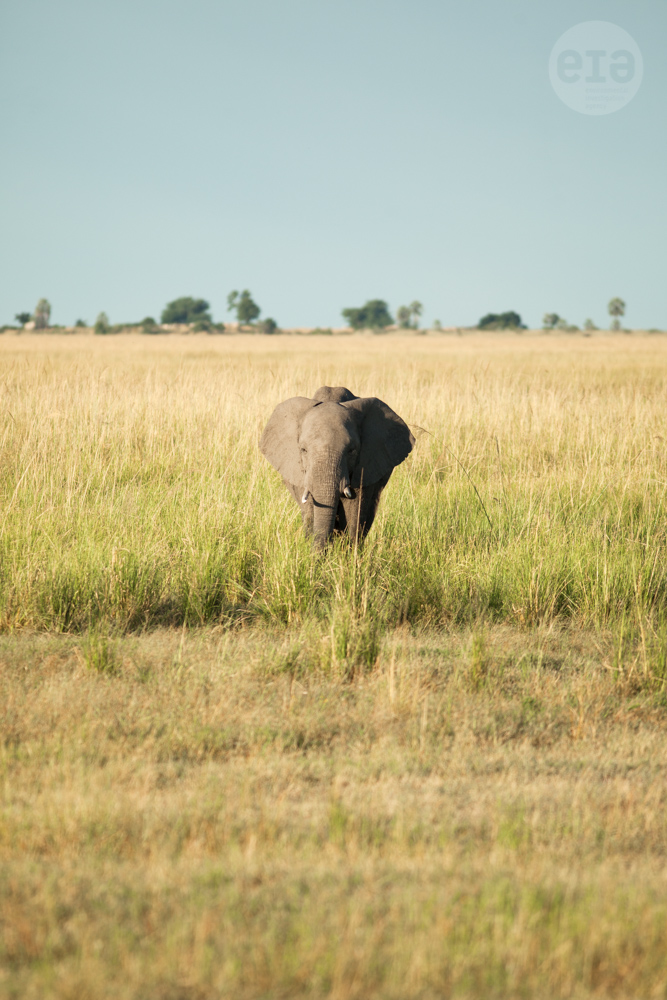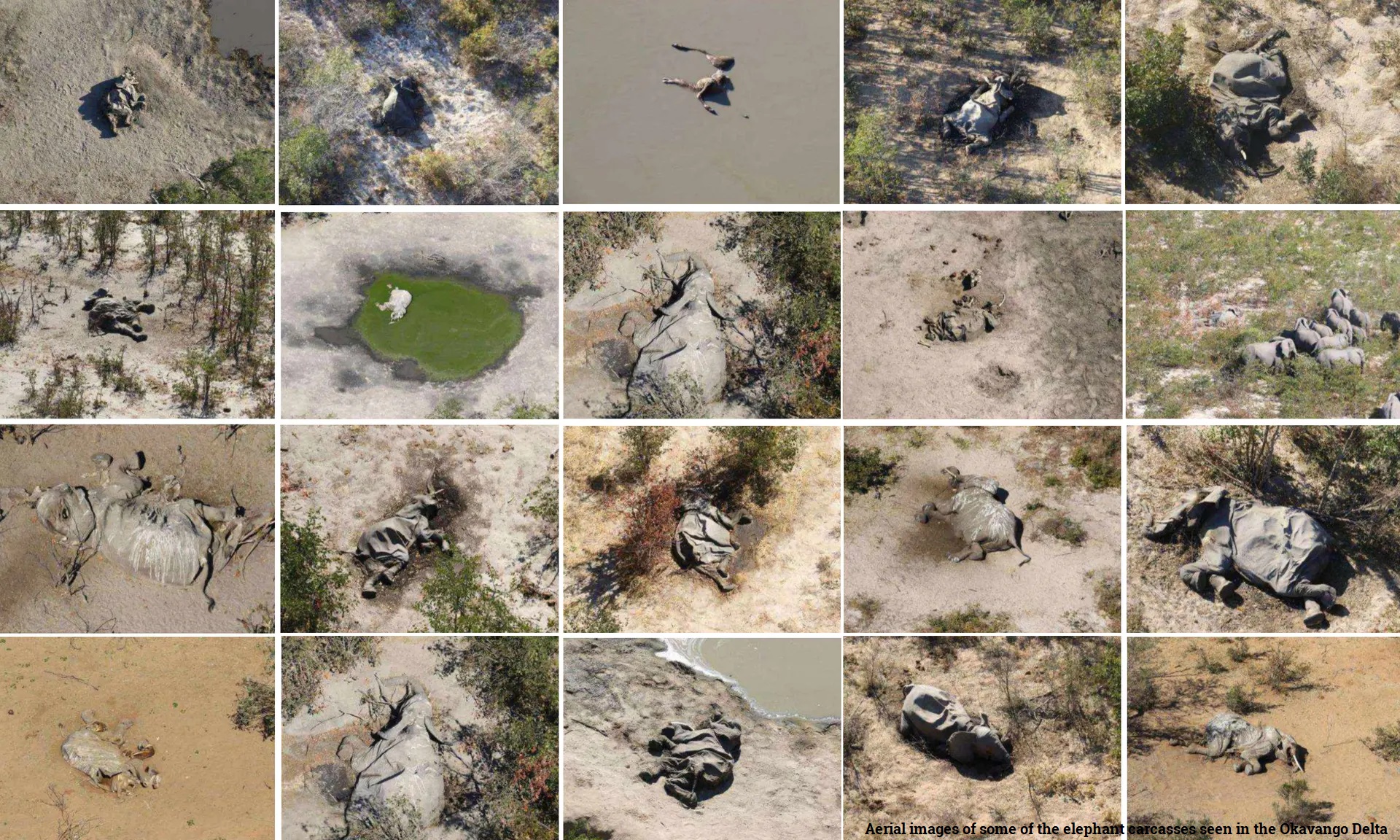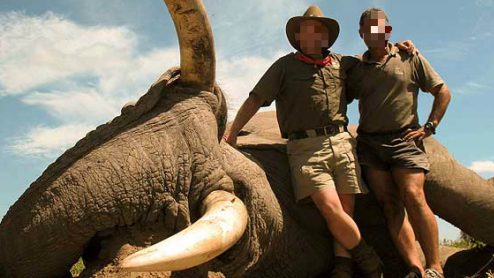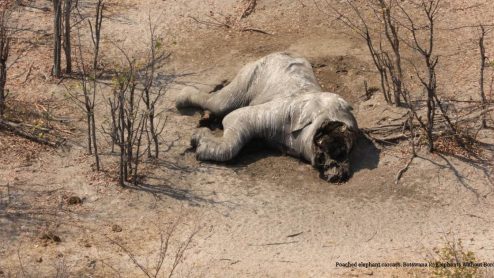Botswana’s elephant crisis – no time for pride and arrogance with such a pressing need for action
Botswana has been in the news a lot this past week, following the mysterious mass die-off of hundreds of elephants.
As well as the announcement that since the beginning of 2020 a total of 16 armed poachers have been killed, yesterday (5 July) came the news that the country is being used as a conduit to smuggle shark fins to neighbouring countries.
I first visited Botswana, with its vast expanses of wilderness, endless big skies and teeming wildlife, back in the 1990s. Since then, I have returned a number of times, either as a tourist or on EIA work and, as a result, I have been afforded the privilege of gaining valuable insights into the country and its culture.
Landlocked, with a population of just under two-and-a-half million people and about the same size as France, it boasts the largest elephant population in Africa as well as the largest zebra migration in Africa plus a number of other similar accolades.
Until recently, it boasted the title of ‘safe haven’ for both elephants and rhinos, two species which have been targeted by transnational criminal networks and associated poaching – and rightly so. Indeed, it was deemed so secure that in 2014, and in response to the rhino poaching crisis it had been fighting and losing, South Africa started relocating up to 100 rhinos as a mitigation exercise.
It is clear from a number of conversations I have had with a range of stakeholders over the last decade that Botswana felt invincible, that it didn’t need help from anyone and did not believe the wave of poaching coming down the continent would affect it.
 Fast-forward a few years and the situation looks very different. With the poaching of elephants and rhinos increasing at an alarming scale over the past few years, Botswana took the decision to evacuate some rhinos to undisclosed sanctuaries, move others away from the Okavango Delta – the current epicentre of the poaching crisis – and to undertake a dehorning programme. Whether dehorning proves to be an effective deterrent to poachers remains to be seen – brutal experience has already demonstrated that having tracked a particular animal to secure its horn, poachers will nonetheless kill it anyway and remove the nub that’s been left.
Fast-forward a few years and the situation looks very different. With the poaching of elephants and rhinos increasing at an alarming scale over the past few years, Botswana took the decision to evacuate some rhinos to undisclosed sanctuaries, move others away from the Okavango Delta – the current epicentre of the poaching crisis – and to undertake a dehorning programme. Whether dehorning proves to be an effective deterrent to poachers remains to be seen – brutal experience has already demonstrated that having tracked a particular animal to secure its horn, poachers will nonetheless kill it anyway and remove the nub that’s been left.
As a cautionary tale, Tanzania was once home to the largest elephant population in East Africa, second only to Botswana. But by 2014 all that had changed.
Between 2008-14, Tanzania lost almost 70 per cent of its elephant population to poachers. This didn’t happen overnight – the alarm was sounded by the Tanzanian press as early as 2009 and evidence repeatedly provided to Tanzanian decision-makers behind closed doors regarding the scale of poaching was seemingly dismissed or ignored. Offers of help and support were rejected while the machinery of the responsible department was mired in a bureaucracy which prevented swift and meaningful action – failure, perceived or otherwise, was unacceptable and to be suppressed at all costs.
 The response of the Tanzanian Government was to gag and threaten those trying to speak truth to power. New laws were introduced, forbidding anyone to contradict or challenge official statistics or figures, and media outlets were closed. Individuals in the Wildlife Division under the Ministry of Natural Resources and Tourism – widely acknowledged at that time as institutionally corrupt – were implicated in the poaching and trafficking of ivory. No-one was ever charged or prosecuted.
The response of the Tanzanian Government was to gag and threaten those trying to speak truth to power. New laws were introduced, forbidding anyone to contradict or challenge official statistics or figures, and media outlets were closed. Individuals in the Wildlife Division under the Ministry of Natural Resources and Tourism – widely acknowledged at that time as institutionally corrupt – were implicated in the poaching and trafficking of ivory. No-one was ever charged or prosecuted.
By 2014, the situation could no longer be ignored and the decision was made to finally acknowledge the problem and start to tackle it. But it could all have been so different.
The Botswana Defence Force statement of 2 July flagging the number of poachers killed in anti-poaching exercises could be considered a tacit acknowledgement of the growing problem in Botswana, although ultimately an intelligence-led approach might result in fewer fatal contacts and greater disruption; the poachers are at the lowest end of the trade chain and more will simply come until the facilitators, logisticians and co-ordinators higher up the illegal trafficking trade chain are taken to task.
The mysterious deaths of hundreds of elephants over the past two months is yet another blow to the country’s reputation, not so much because of the event itself but more in terms of the response – or, until last week, the lack of one – and transparency around the matter.
But better late than never. Since the crisis was exposed in the world’s media, there have been a number of statements from the Department of National Parks and Wildlife. Perhaps now the offers of assistance and support from local stakeholders will be accepted as part of a joint effort to tackle the imminent threat facing Botswana.
In the final analysis, an individual or an organisation or a country will be judged not because it has a problem or is faced with an uncomfortable truth, but by how it deals with it in an open, transparent and inclusive way.
It is understandable to feel pride, to clutch at hard-earned accolades, but there is a fine line between pride – some would say arrogance – and a swift descent to notoriety.





